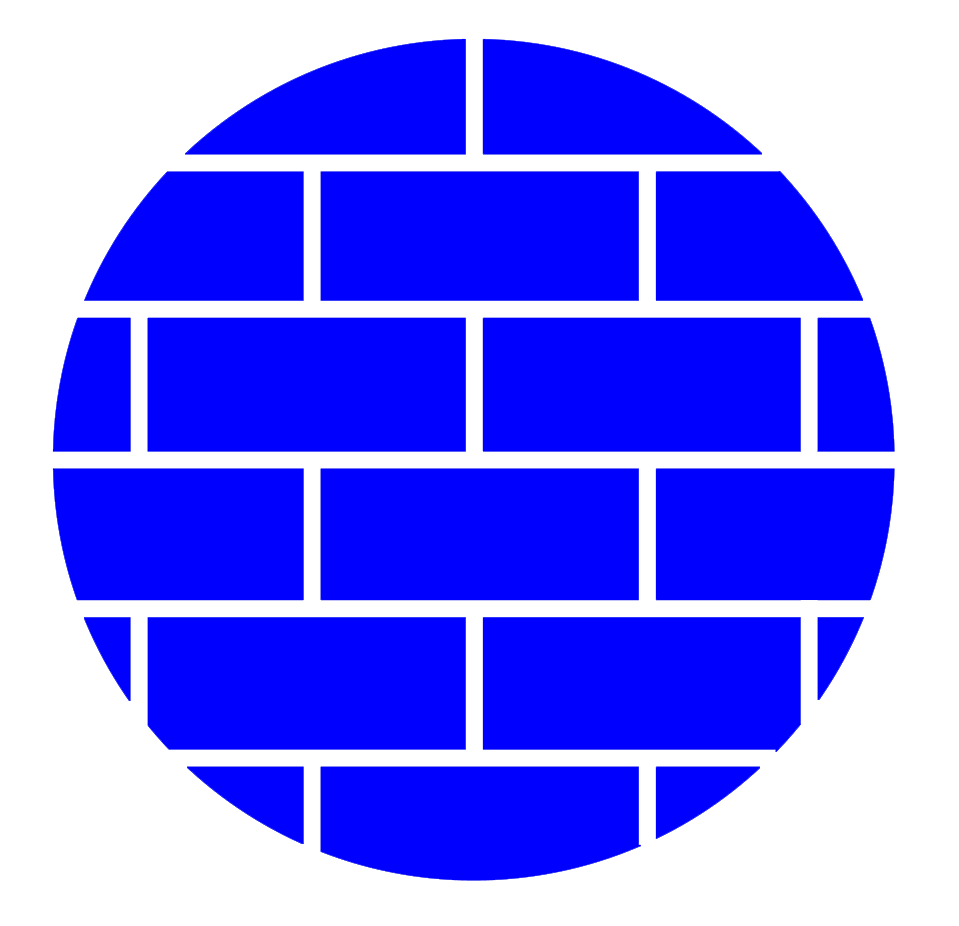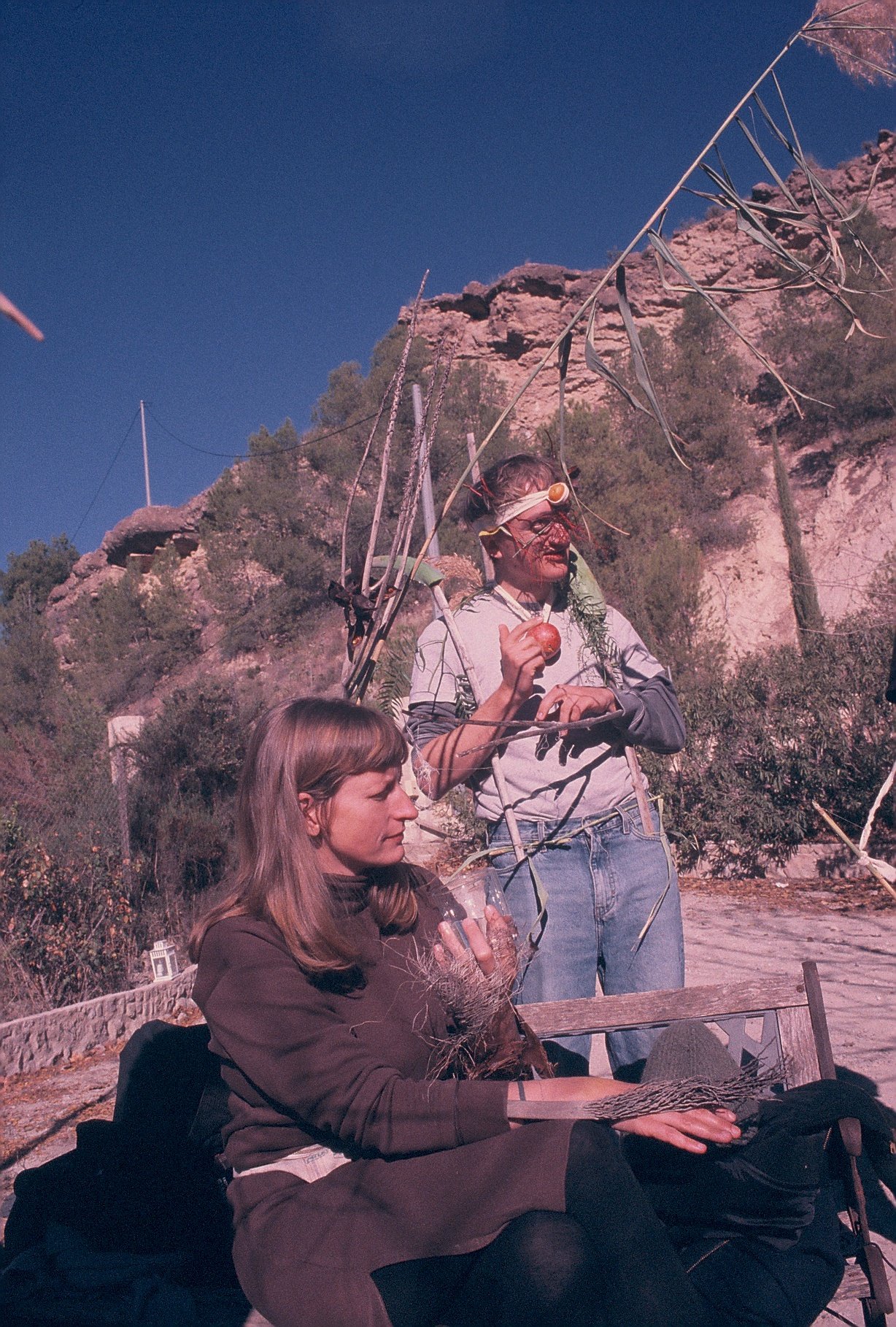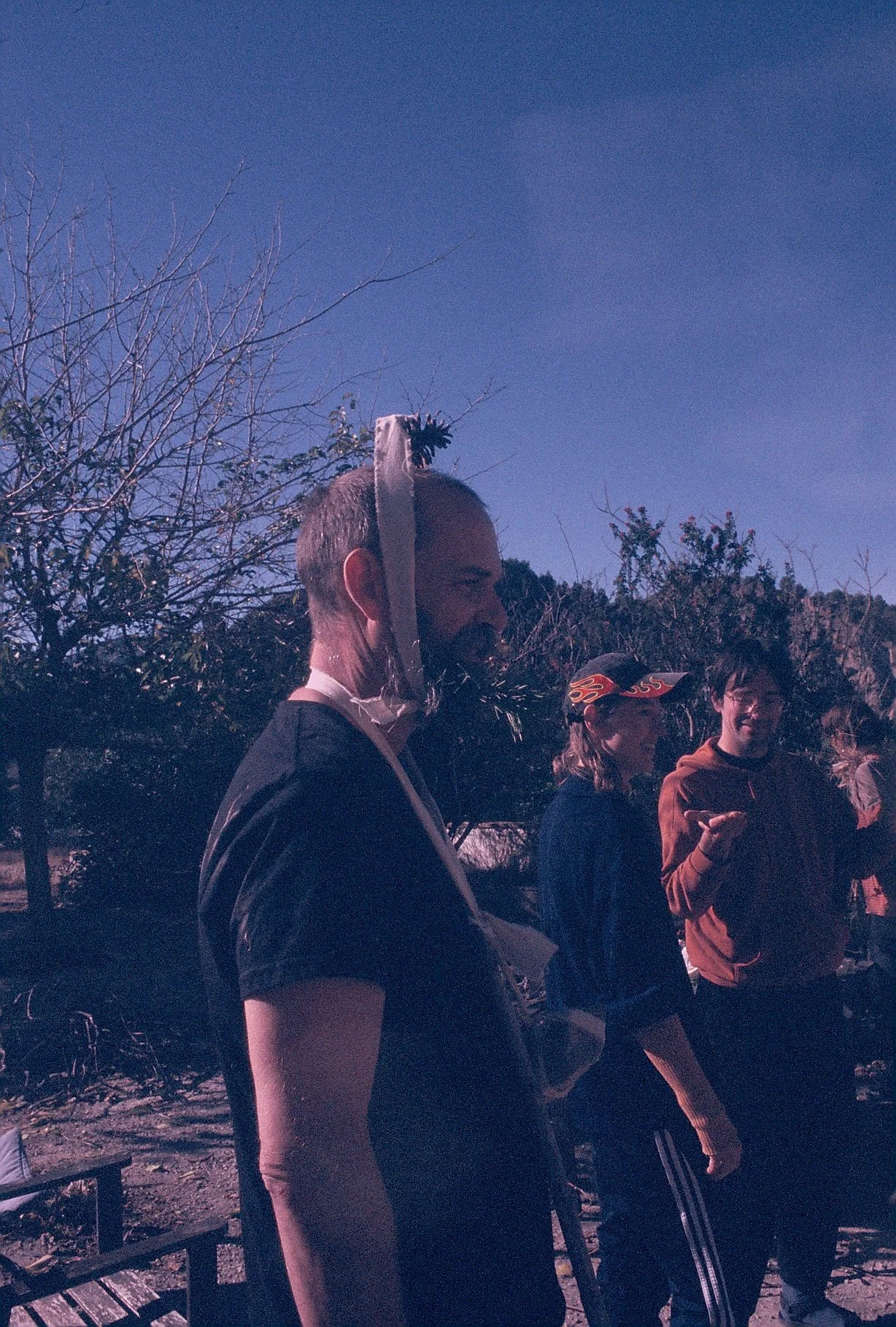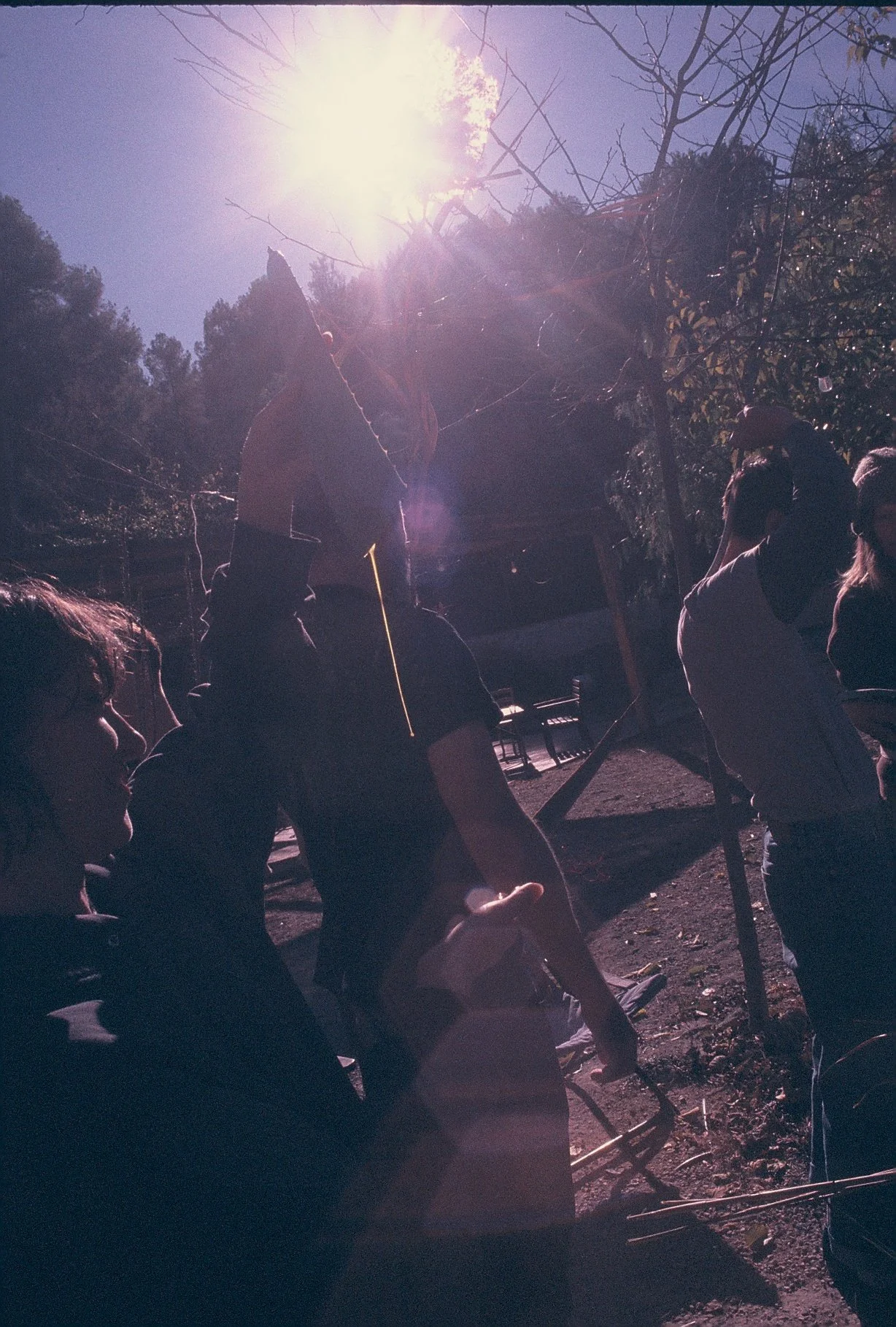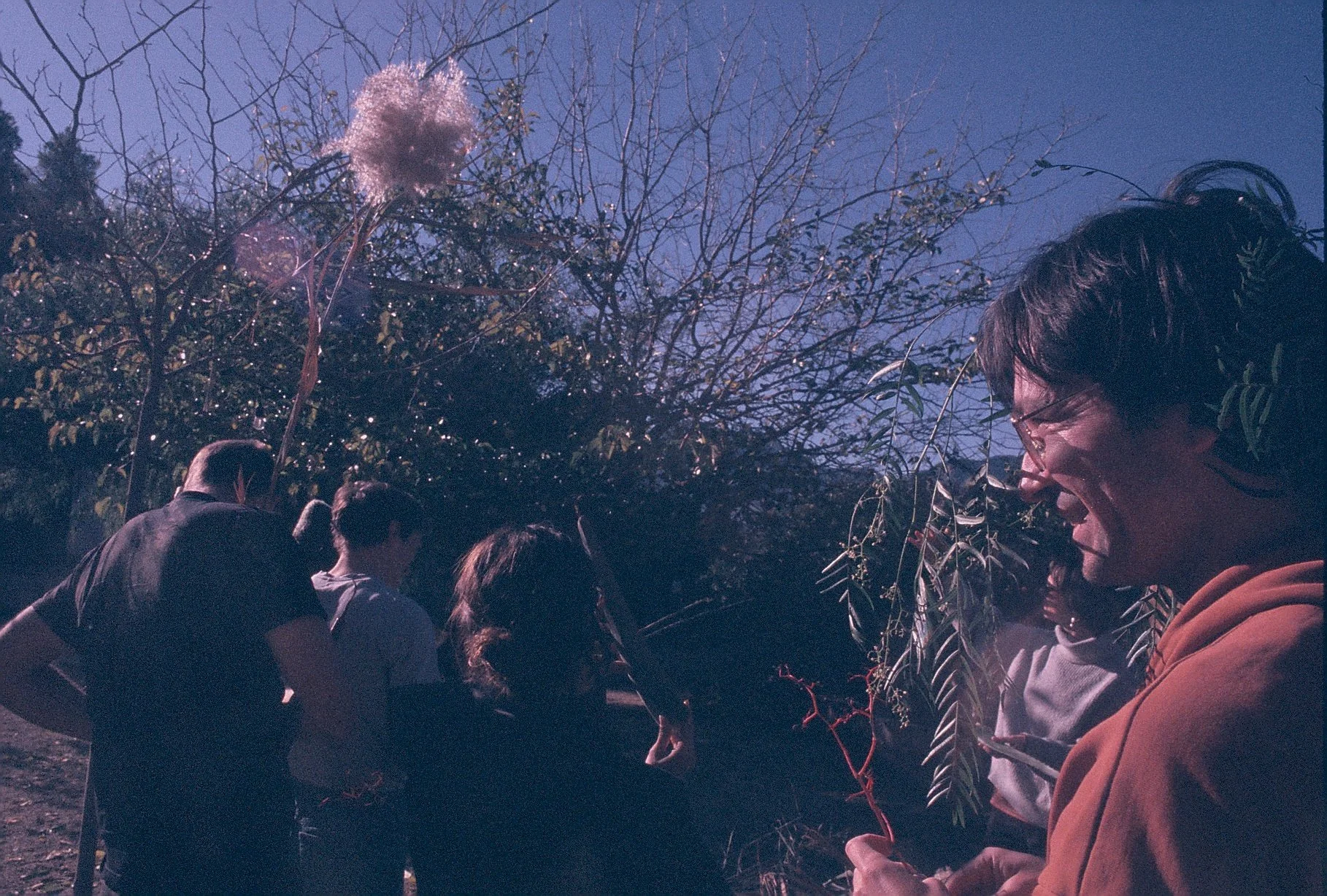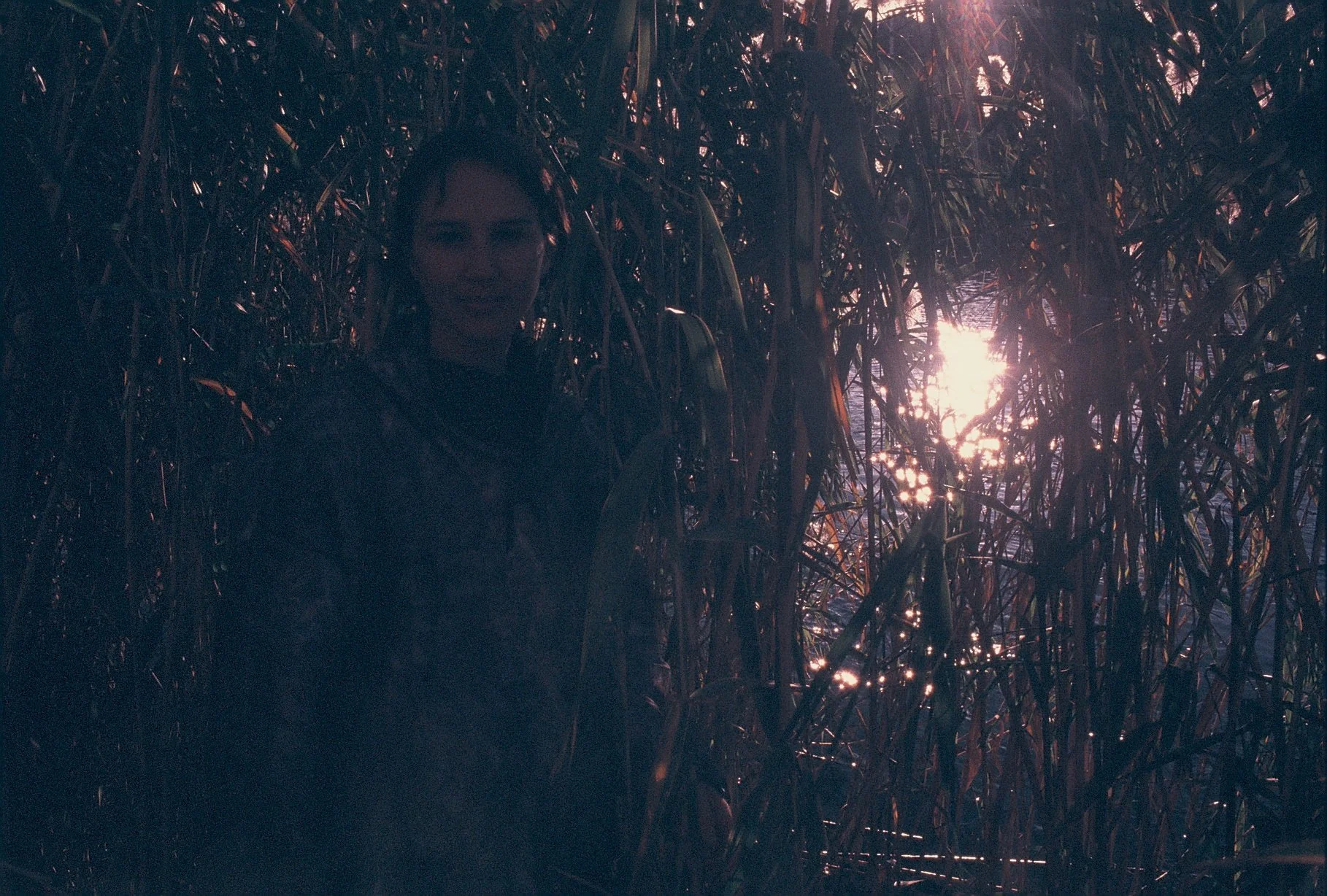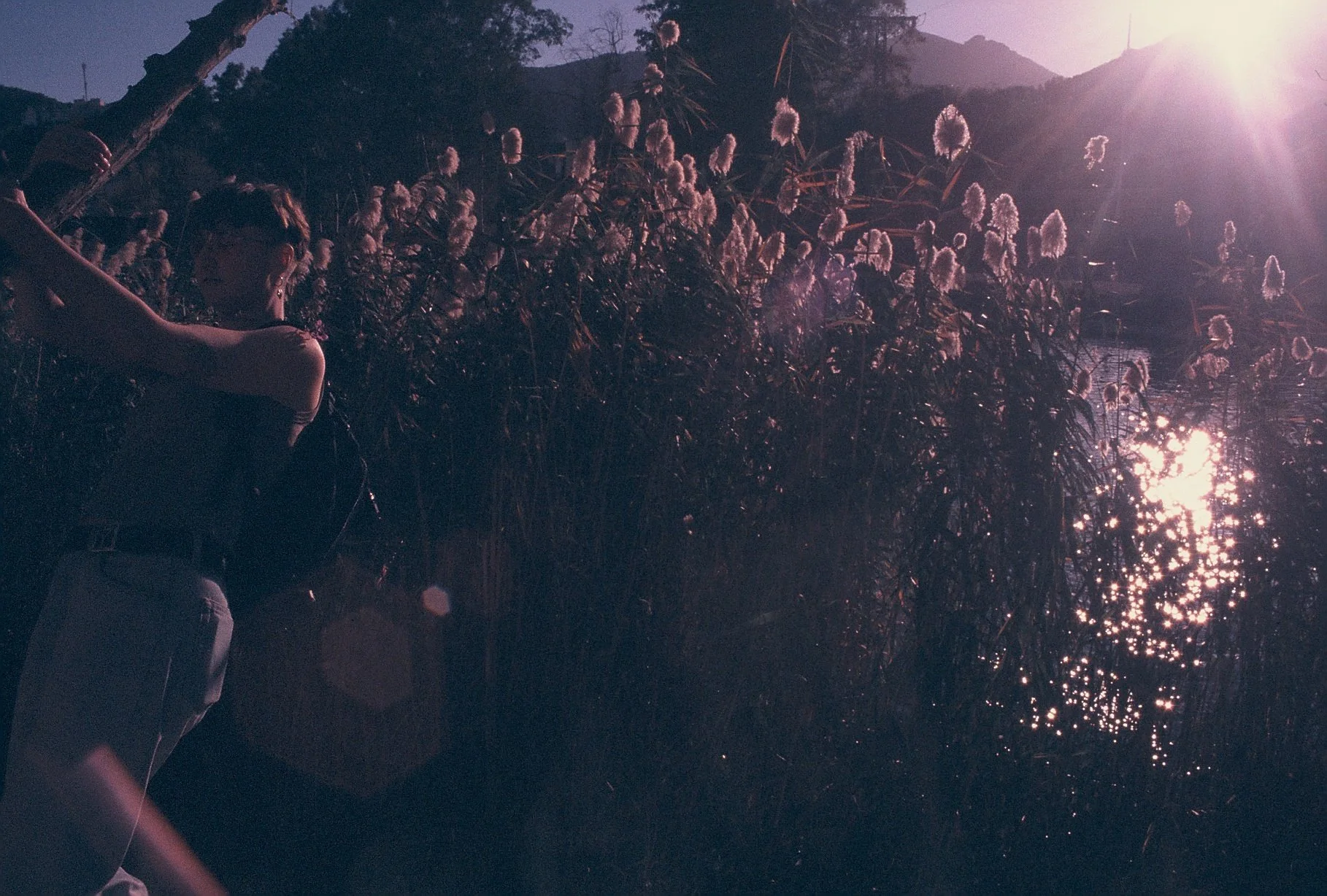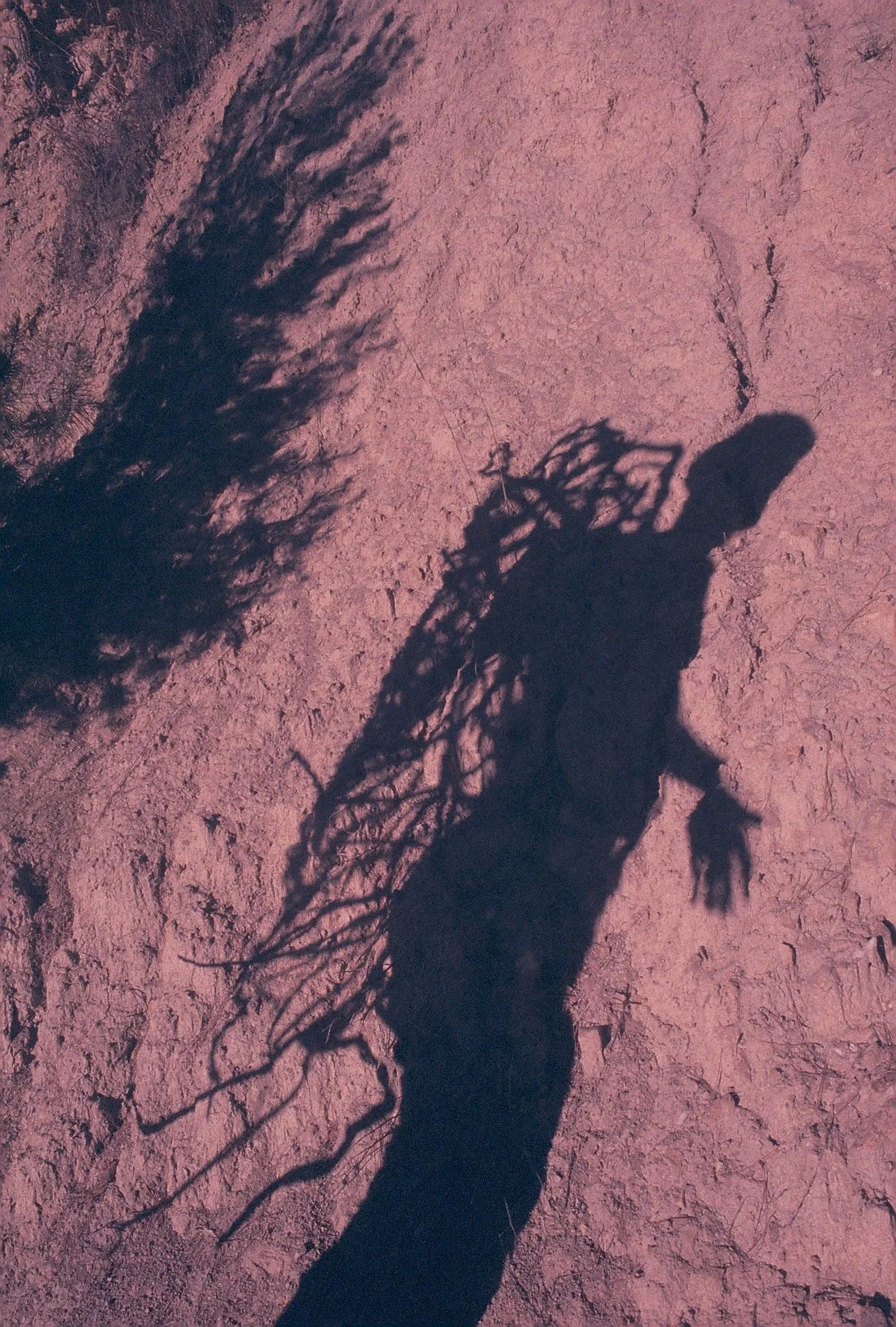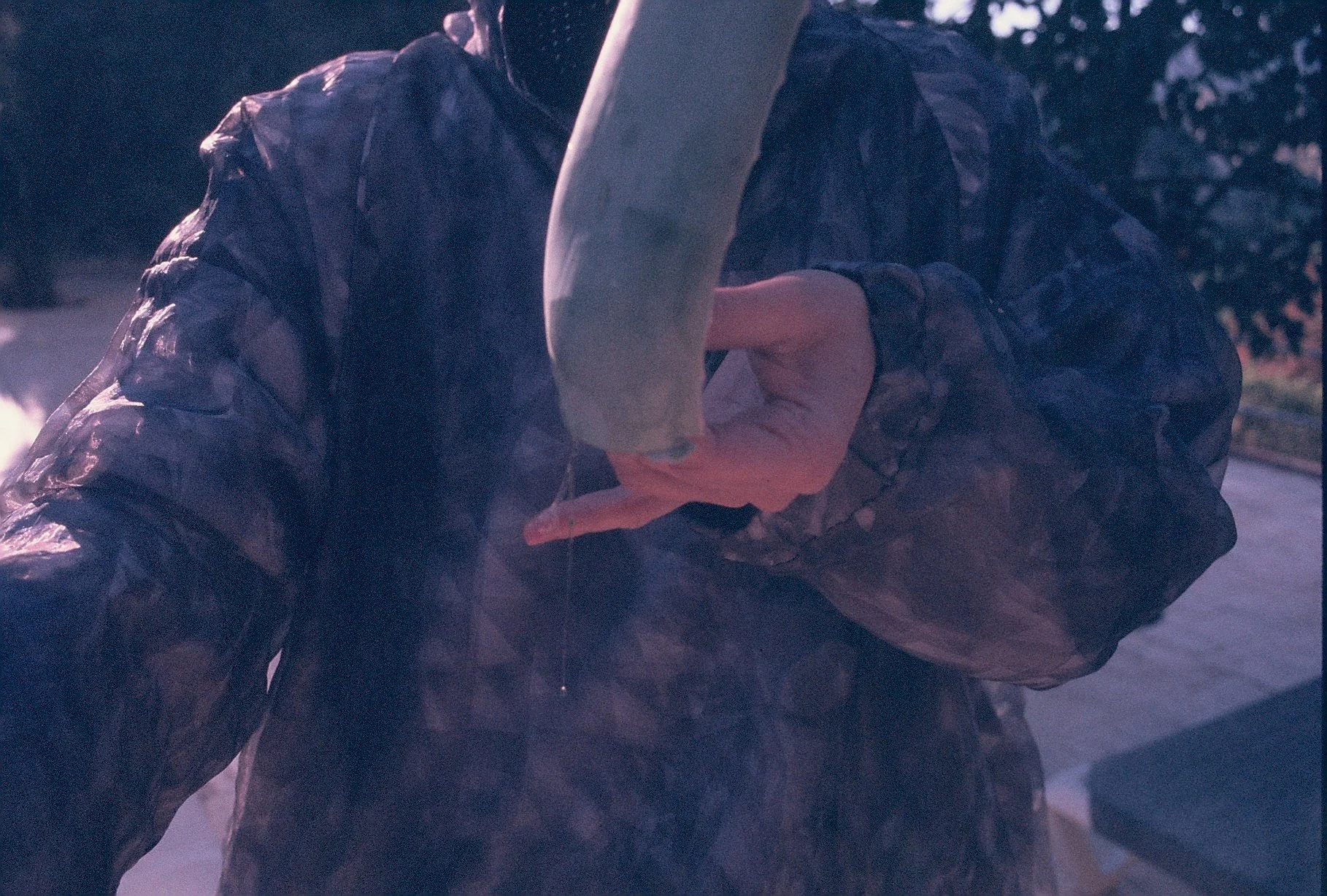Naturpathic Somaesthetics
At rota festival, Dec. 2023, Blanca, Spain
Workshop & Embodiment Practice by Lou Croff Blake & Madelyn Byrd
Naturopathic Somaesthetics is an exploration in tactile knowledge; it generates a bodily conversation with earth. It is a place-based practice; in its first iteration, we got to know the southern Spanish landscape through the surface of our skins. Leading this workshop on a sunny morning, we asked our participants to fashion foraged organics onto their bodies, and to fashion their bodies onto the earth. It could be as simple as lying down in tall grass, or squeezing a pinecone. As they adorned themselves, we asked practitioners to pay attention to texture, temperature, pressure, movement, sound, and smell. We also gave a loose schema to consider when experimenting with material: hard organics (i.e. tree branches), soft organics (i.e esparto grass), hard minerals (i.e. boulder), and soft minerals (i.e. mud).
‘Naturopathic’ alludes to wellbeing conjured from natural substances. ‘Somaesthetics’ is embodied aesthetic experience; it flips the hierarchy that privileges verbal, narrative experience, and instead centers knowledges that cannot be conveyed in words. We pair these concepts with the practice of automatic fashioning, which, much like automatic writing, channels stream of consciousness; it is an intuitive process of getting dressed. The resulting methodology uses a locavore material palette, and can be transposed into any region and biome. The learning objective is, in a broad sense, a heightened empathy for earth that incites environmental activism. More acutely, we seek the body's knowledge of place beyond verbal description, repositioning the ‘second body’ (earth) as the ‘first home’ (clothing). The somaesthetic memories we hold of Blanca can be described – such as the tickling pressure of wrapping one’s forearms in the pink peppercorn tree’s viney branches, or the sound and texture of inserting an entire hand into a massive aloe steak – but they must be felt to be truly known.
Before beginning our workshop, we shared some light theory with our participants. We ground this practice in biophilic theory, queer theory, regenerative sustainability, and in indigenous wisdoms. We shared Kimmerer’s Honorable Harvest, which sets tenets for foraging with humility and without causing extractive harm. We also shared Halberstam's definition of bewilderment: a queer, rebellious “process of becoming wild by shedding knowledge.” After a few supplementary points of theoretical reference and a guided somatic presencing exercise, we launched our practitioners into playspace.
Photography by Teres Burkova
“I first put the stalks of aloe plant down my pants. When I walk, my body is imobilized at the hip. I feel the pressure of my waistband nicely tug on my back, pulled by the stiff rods. The pronged stalk top jab my shoulders pleasantly; if I shimmy, I feel it in my legs.”
“I lean into a tree. Its long soft leaves dance on my exposed skin. My weight supported by a constellation of contact points, the flexibility of the thin branches allows me to sway buoyantly; I learn the elasticity of its wood through my own springing movements. The sun warms my back, and I learn how it feels the sun at this time of day, too. There is no pain in this one, only pleasure and a soft rocking that soothes.”
“I wear aloe steaks like gloves. With my buck knife, I slice into the thick jelly. It is almost too erotic to be doing in public; fisting aloe. The sounds (like lasagna), the mucus that pulls away on my fingers, which are made pinker in contrast with the acidic bright green. When fully inserted, my hand is transformed into a ridged long point.”
